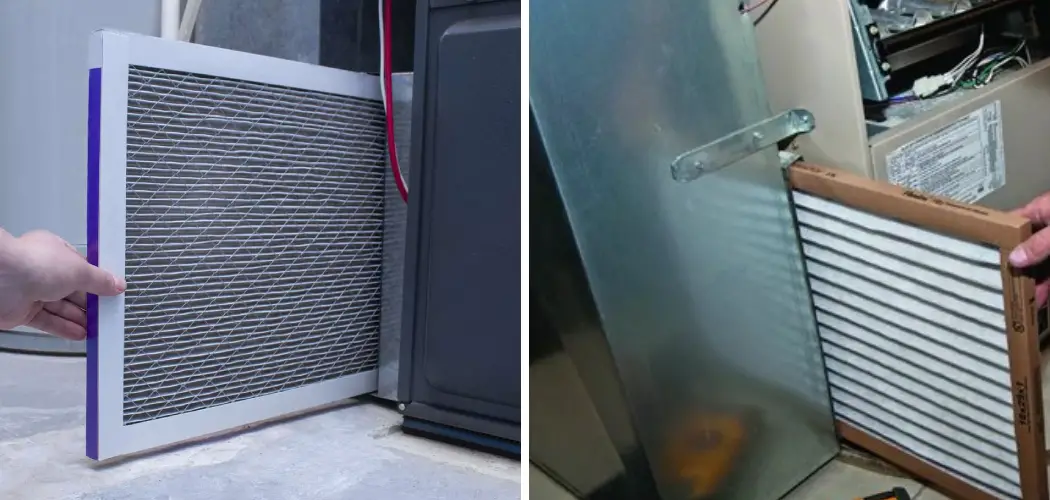Dealing with a stuck furnace filter can be a frustrating challenge for homeowners seeking to maintain optimal heating efficiency. A clogged or dirty filter not only hampers the furnace’s performance but also poses potential risks to your HVAC system. In this article, we will explore effective methods on how to remove a stuck furnace filter without causing damage to the unit.
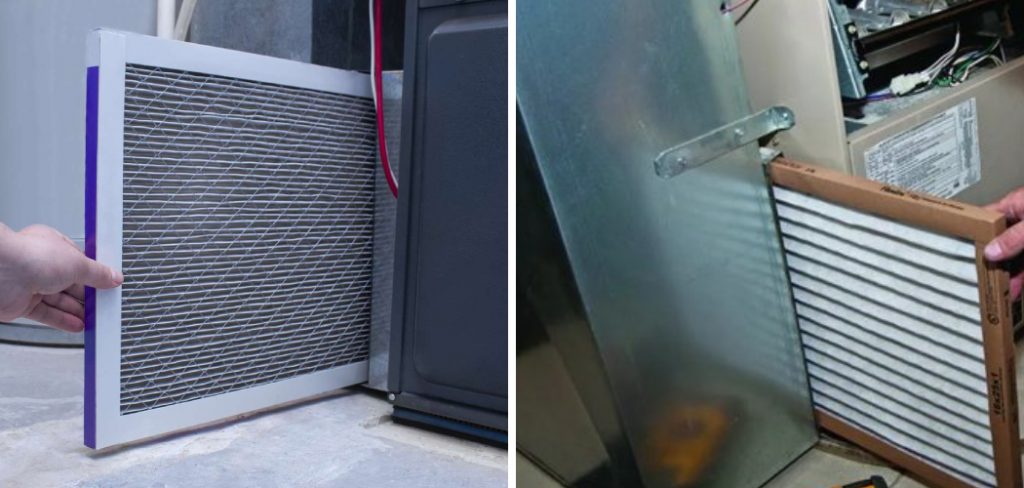
From understanding the common causes of a stuck filter to employing practical techniques to safely extract it, this guide aims to empower homeowners with the knowledge and skills necessary to address this common issue. So, if you find yourself grappling with a stubborn furnace filter, join us on this informative journey to ensure your heating system operates at its best, promoting both efficiency and longevity.
Importance of Regularly Changing Furnace Filters
Regular maintenance of your furnace is crucial for ensuring its longevity and efficiency, and at the heart of this maintenance routine is the regular changing of the furnace filter. A clean filter is essential for the smooth operation of your HVAC system, as it traps dirt, dust, and other particles, preventing them from entering the furnace and circulating throughout your home.
Over time, these filters can become clogged with debris, which can significantly impede airflow. This not only forces your furnace to work harder, leading to increased energy consumption and higher utility bills, but can also shorten the life span of the unit by causing overheating and unnecessary wear on system components.
Additionally, a clean furnace filter is vital for maintaining indoor air quality, contributing to a healthier living environment by reducing the amount of allergens and pollutants that circulate in the air.
Reasons Why a Furnace Filter Might Become Stuck
There are several reasons why a furnace filter might become stuck and difficult to remove. First and foremost is the expansion of the filter material due to prolonged exposure to moisture or changes in temperature. This can cause the filter to swell and fit more snugly in its slot, making extraction challenging. Another common cause is the accumulation of dirt and debris.
Over time, as filters trap more particles, they can become clogged and adhere to the furnace’s interior surfaces. Incorrect installation is also a frequent culprit; if a filter is not properly aligned or is the wrong size for the slot, it can become wedged or stuck.
Lastly, mechanical issues with the furnace itself, such as bent or rusted filter slots, can hinder the filter’s removal. Understanding these potential issues is the first step toward effectively addressing a stuck furnace filter.
Identifying Signs of a Stuck Furnace Filter
Recognizing the signs of a stuck furnace filter early can help prevent potential damage to your HVAC system and ensure that your home remains comfortable and energy efficient. One of the most obvious signs is a noticeable reduction in airflow from your heating vents. If the air feels weaker than usual, it could indicate that a clogged or stuck filter is blocking normal airflow.
Another sign to watch for is unusual noises coming from the furnace, such as whistling or struggling sounds, which can occur when the system is forced to work harder to pull air through a blocked filter. Additionally, an unexpected increase in dust and allergens within your home might suggest that the furnace filter is unable to perform its job effectively.
If you also notice an unexplained rise in your energy bills, it could be an indication of reduced efficiency due to a stuck filter. Being alert to these signs can help you take timely action to address the issue before it leads to more serious problems.
Role of Furnace Filters
Furnace filters serve a critical role in the overall functioning and efficiency of your heating, ventilation, and air conditioning (HVAC) system. Their primary function is to clean and purify the air circulating through the system by trapping and holding various airborne particles and contaminants such as dust, pollen, hair, and mold spores.
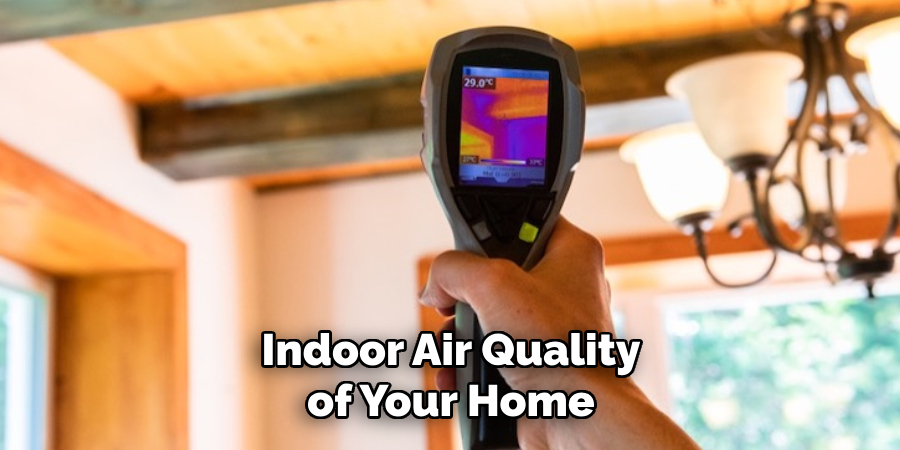
This not only helps in enhancing the indoor air quality of your home, making it healthier for its occupants, but also protects the furnace components from getting clogged and damaged by these particles. A clean and unobstructed filter allows for smooth airflow, ensuring that your furnace operates efficiently, conserves energy, and reduces the strain on its mechanisms, thereby extending the lifespan of the unit.
Understanding the pivotal role that furnace filters play highlights the importance of regular inspections and changes to ensure your HVAC system works optimally and maintains a clean, safe, and comfortable living environment.
Common Issues with Filters
Furnace filters, while crucial for maintaining an efficient HVAC system and clean air quality, can encounter several common issues that may affect their performance or lead to being stuck. One prevalent problem is the use of incorrect filter sizes.
A filter that is either too small or too large for the furnace slot can create gaps or become wedged, respectively, leading to inefficient filtering or difficulty in removal. Another issue is the build-up of excessive dirt and debris, which not only impedes airflow but can also cause the filter to become physically stuck to the furnace’s interior, making it challenging to replace without causing damage.
Moisture exposure can further complicate matters; when filters become damp, either due to high humidity or leaks in the HVAC system, they can expand, distort, or develop mold and mildew, which not only makes them difficult to remove but also poses a health risk.
Lastly, neglecting regular filter exchanges can lead to overaccumulation of dust and particles, necessitating more frequent replacements and attentive monitoring to prevent these common filter issues.
10 Methods How to Remove a Stuck Furnace Filter
1. Turn Off the Furnace:
Begin by turning off the furnace to ensure safety during the filter removal process. Locate the furnace switch or breaker and power down the unit before attempting any filter extraction. This will prevent any unwanted accidents or injuries. Once the furnace is turned off, you can proceed to remove the filter.
Once the furnace is turned off, it’s important to let it cool down before attempting to handle the filter. This will not only protect your hands from burns but also ensure that the filter doesn’t disintegrate due to high temperatures. After allowing some time for the furnace to cool down, you can now safely remove the filter.
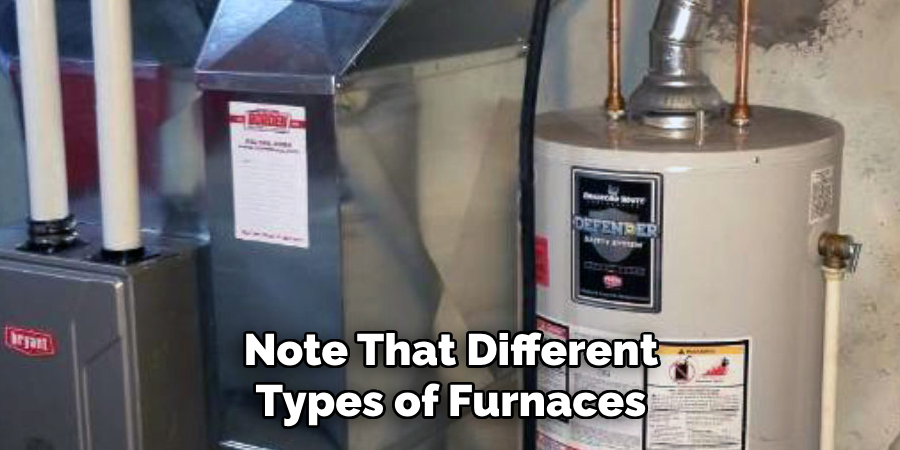
It’s important to note that different types of furnaces may have different methods of filter removal. Some filters may simply slide out while others may require unscrewing or unhinging a cover. It’s recommended to consult your furnace’s manual or manufacturer for specific instructions on how to remove the filter.
2. Identify the Type of Filter:
Understand the type of filter your furnace uses, as this will impact the removal method. Filters can be disposable, reusable, or electrostatic, each requiring a different approach. Consult your furnace manual if you’re unsure about the filter type.
Disposable filters are the most common type and need to be replaced every 1-3 months, depending on usage. Reusable filters are made of washable materials and can last for years with proper maintenance. Electrostatic filters use static electricity to attract particles and only need to be replaced once or twice a year.
3. Check for Release Tabs or Latches:
Examine the filter compartment for any release tabs, latches, or locking mechanisms. Some furnaces have specific features to secure the filter in place. Gently release these mechanisms to make the removal process smoother.
After examining the filter compartment, it is important to check for any release tabs, latches or locking mechanisms that may be present. These features are typically designed to secure the filter in place and ensure that it does not come loose during operation.
To avoid damaging these mechanisms, it is recommended to gently release them before attempting to remove the filter. This will make the removal process smoother and reduce the risk of any accidents or malfunctions.
4. Use Proper Tools:
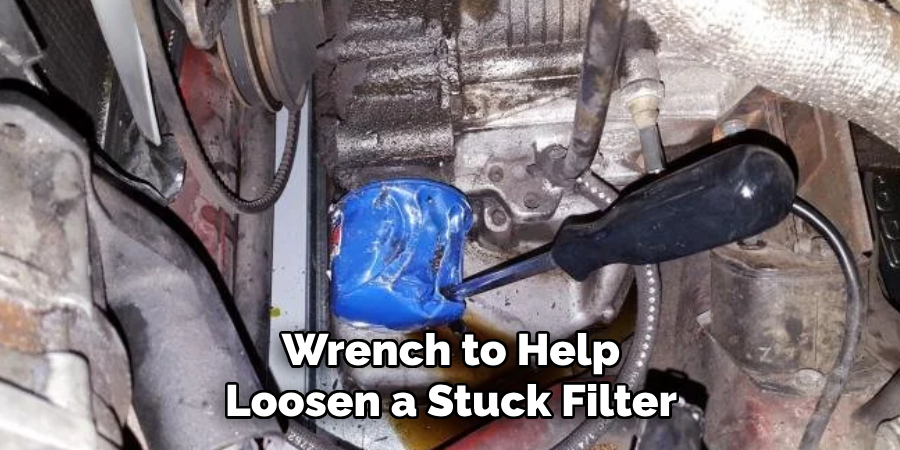
Depending on the design of your furnace, you may need tools like pliers, a screwdriver, or a wrench to help loosen a stuck filter. Use these tools carefully and avoid applying excessive force to prevent damage. It is also important to refer to the manufacturer’s instructions for your furnace model before attempting to remove the filter.
This will ensure that you are using the correct tools and techniques for your specific furnace. If you are unsure or uncomfortable using tools, it is best to seek the help of a professional technician. They have the knowledge and experience to safely remove and replace your furnace filter without causing any damage.
5. Apply Lubricant:
For stubborn or sticky filters, applying a small amount of lubricant to the edges can help loosen them. Use a silicone-based lubricant or a specialized filter spray. Allow it to sit for a few minutes before attempting to remove the filter. This method can be especially helpful for old, corroded filters that are difficult to remove.
Another option is to use heat to loosen the filter. You can do this by running hot water over the filter or using a hairdryer on low heat. Be careful not to overheat the filter as it can cause damage.
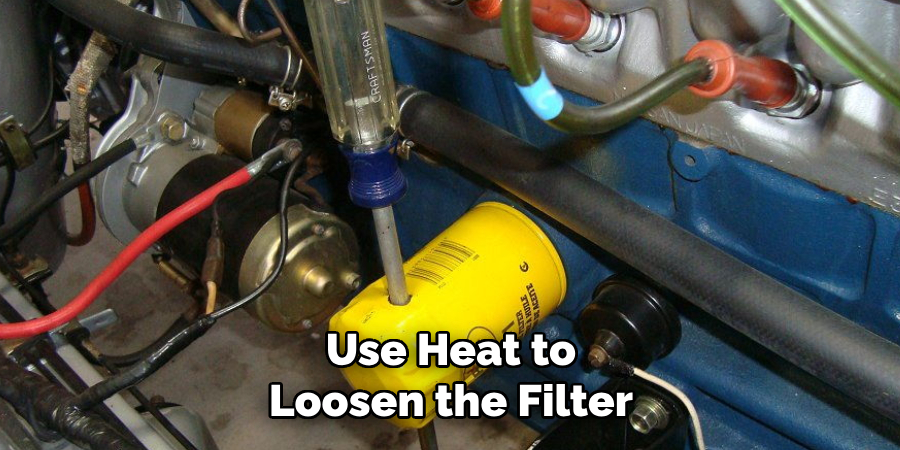
Once you have successfully removed the filter, clean off any excess lubricant or residue before installing a new filter. This will prevent any potential issues with the new filter not functioning properly.
Additionally, it is important to regularly check and replace your filters according to the manufacturer’s recommendations. This will ensure that your equipment runs efficiently and effectively.
6. Tap or Knock Gently:
Lightly tapping or knocking on the sides of the filter can dislodge it from its stuck position. Use the handle of a screwdriver or a mallet to provide gentle but firm taps to release the filter.
You can also try lightly tapping the side of the filter with your hand. This method works best if you have smaller hands or if the filter is not too heavy.
Another technique that can be used is to apply a small amount of oil around the edges of the filter. This will help lubricate any stuck parts and make it easier to remove.
If none of these methods work, you can try using a rubber mallet or a block of wood to gently knock the filter free. It is important to use caution and avoid hitting the filter too hard as this may damage it.
Once the filter has been successfully removed, clean off any accumulated dirt or debris from the area before inserting a new one. This will ensure that the new filter fits properly and works efficiently.
7. Create Leverage:
If the filter is wedged tightly, create leverage by inserting a flat tool, such as a putty knife or a flathead screwdriver, between the filter and the housing. Gradually apply gentle pressure to create space and facilitate removal.
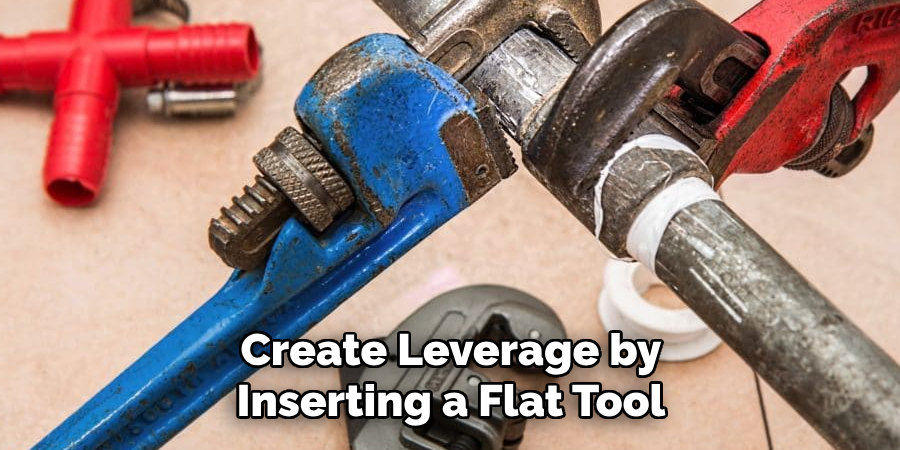
After creating leverage, carefully and slowly pull the filter out of the housing. Be mindful not to damage any surrounding parts or components.
It’s also important to note that sometimes, a stuck filter may require a bit more force and effort to remove. In these cases, it may be helpful to use an oil filter wrench or pliers to grip and turn the filter counterclockwise. This can provide extra leverage and make it easier to remove the filter.
If the filter still won’t budge, it may be necessary to seek assistance from a professional mechanic or technician who has specialized tools for removing stuck filters.
8. Rotate the Filter:
Some filters may be stuck due to misalignment. Attempt to rotate the filter slightly while applying gentle pressure. This can help break any suction or adhesive bond holding the filter in place. After rotating, try removing the filter again. If this does not work, do not force it or use excessive pressure as it may damage your equipment.
Rotating the filter is a simple yet effective way to remove stuck filters. It is important to be gentle and patient when attempting to rotate a filter, as applying too much force can cause damage to both the filter and the equipment.
One common reason for a stuck filter is that it may be misaligned. If the filter is not sitting straight in its housing, it can create a suction or adhesive bond that makes it difficult to remove. By rotating the filter slightly, you are disrupting this bond and making it easier to remove.
9. Use Heat or Cold:
Temperature variations can sometimes help in unsticking a filter. If safe for your furnace model, use a hairdryer to apply heat to the edges of the filter. Conversely, a cold pack or compressed air can contract the filter slightly, making removal easier.
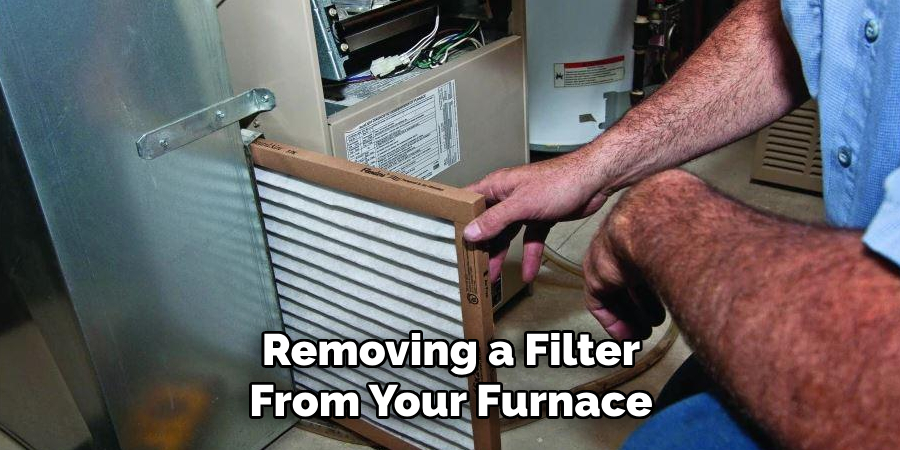
If you are having trouble removing a filter from your furnace, temperature variations may be the solution. While it’s important to always follow the manufacturer’s instructions and ensure that your furnace can handle heat or cold, these methods can sometimes help in unsticking a filter.
For instance, if your furnace is capable of handling heat, you can use a hairdryer to apply warmth to the edges of the filter. The heat can help loosen any adhesive or debris that may be preventing the filter from being removed easily. You should make sure to wear protective gear and never use a hairdryer near water or flammable materials.
10. Seek Professional Assistance:
If all else fails or if you are uncomfortable attempting the removal yourself, it’s advisable to seek professional assistance. An HVAC technician has the expertise to handle stuck filters without causing damage to the furnace. They also have the necessary tools and equipment to safely remove the filter without any risk of injury.
Furthermore, a professional HVAC technician can inspect your furnace for any potential issues that may be causing the filter to stick. This could include problems with the blower motor or air ducts that are affecting airflow and creating excess pressure on the filter. By addressing these underlying issues, you can prevent future incidents of stuck filters and ensure efficient operation of your furnace.
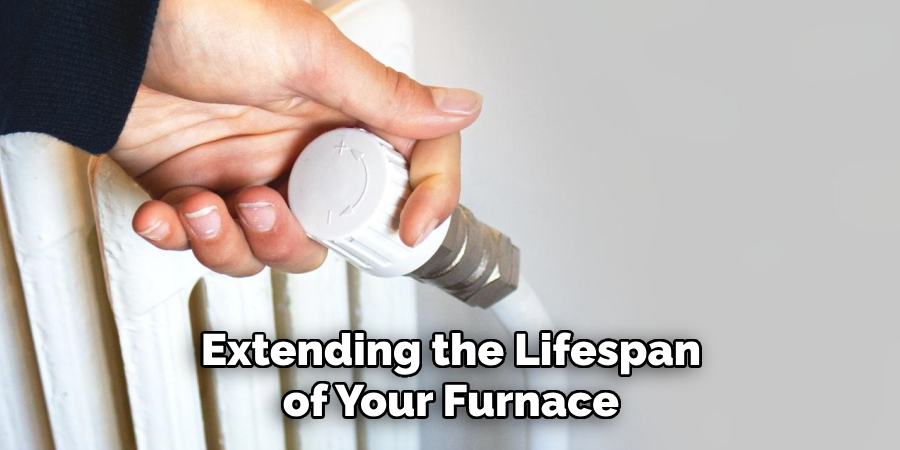
In addition to removing the stuck filter, an HVAC technician can also provide maintenance services such as cleaning and replacing air filters, checking for any leaks or cracks in the ductwork, and ensuring all components are functioning properly. Regular professional maintenance is crucial for extending the lifespan of your furnace and avoiding costly repairs.
Conclusion
In conclusion, successfully removing a stuck furnace filter requires patience, caution, and the right approach. By assessing the situation, preparing adequately, and applying appropriate techniques, homeowners can address obstructions effectively and maintain their furnace’s efficiency. Regular maintenance, including filter replacements, remains essential for optimal furnace performance and indoor air quality.
If faced with persistent issues or concerns about damaging components, seeking professional assistance is advisable. Prioritizing safety and adherence to proper maintenance practices ensures a comfortable and healthy home environment for occupants. Hopefully, this article gave you some helpful tips about how to remove a stuck furnace filter successfully, so now that you have the proper knowledge on how to get the job done, why not give it a try today?

